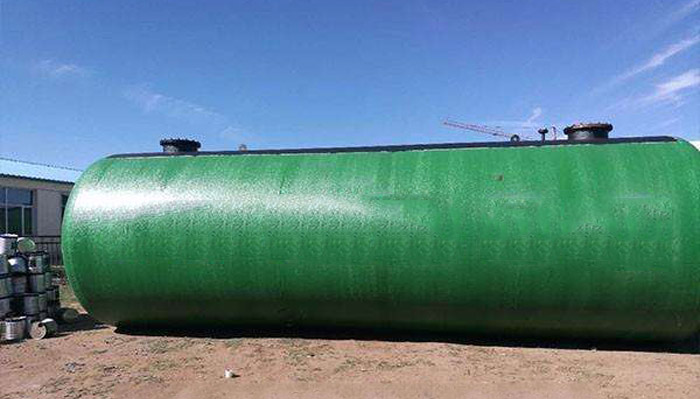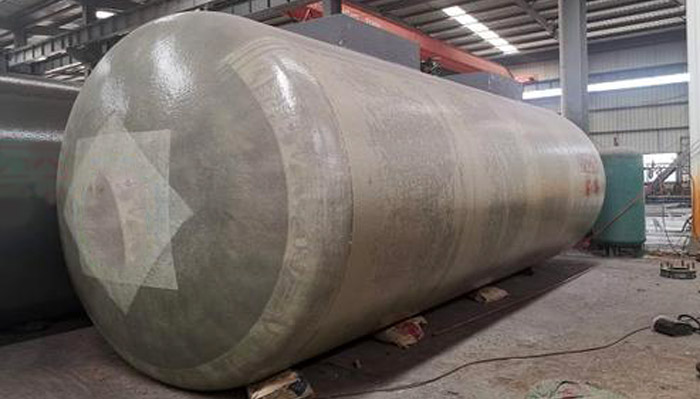Product Category
Improvement measures of common safety accessories for oil tanks
Date: Oct 28, 2020

1. Inspection and maintenance of breathing valve
In the daily inspection of double-layer oil tanks, a manual test terminal can be attached to the breathing valve, and manual handles and test buttons can be used for direct-acting breathing valves and pilot breathing valves. During the inspection, the general quality of the breathing valve can be sensed by applying a manual force slightly greater than the force of the gas pressure on the valve disc on the manual test terminal. In the daily inspection of the pressure vessel, you can test it every time. The valve disc can be frequently operated within its full opening range to effectively prevent corrosion, jamming, adhesion, etc., and it can also be opened by manual test terminals in emergency situations. Oil tank breathing valve.
Maintenance method: clean the internal components of the breathing valve, if necessary, use kerosene to clean; use a finer abrasive (such as Hongdan lubricant) to grind the non-ferrous soft metal material on the sealing surface; wipe off the rust on the valve body sealing net And dust to ensure the smooth flow of gas in and out and regular oiling of the bolts.
2. Inspection and maintenance of hydraulic safety valves
The inspection and maintenance of the oil tank hydraulic safety valve mainly includes the valve body and the liquid seal oil. In particular, the liquid-sealed oil will lose a part of it during use, and water vapor and a part of the oil and gas discharged from the tank will condense in the liquid-sealed oil. Therefore, the quantity and severity of the liquid-sealed oil will change after long-term use. In order to ensure the correctness of its control pressure, regular inspection and maintenance must be carried out. The maintenance of hydraulic safety valves is generally carried out once a quarter. The main contents of the inspection and maintenance of the double-layer oil tank are as follows: 1. Check for leakage and oil traces on the surface of the valve body; 2. Check whether the inner cylinder partition is worn and cause the inlet and outlet bypass; 3. Check the oil Whether the ruler seal is good; 4. Whether the height of the liquid seal oil meets the requirements, add liquid seal oil if necessary; 5. Check whether the liquid seal oil is qualified, and release the water and impurities at the bottom. If necessary, test the oil or replace the oil; Strengthen daily inspections to ensure the normal operation of pressure vessel hydraulic safety valves.
The main contents of the inspection and maintenance of the double-layer oil tank are as follows: 1. Check for leakage and oil traces on the surface of the valve body; 2. Check whether the inner cylinder partition is worn and cause the inlet and outlet bypass; 3. Check the oil Whether the ruler seal is good; 4. Whether the height of the liquid seal oil meets the requirements, add liquid seal oil if necessary; 5. Check whether the liquid seal oil is qualified, and release the water and impurities at the bottom. If necessary, test the oil or replace the oil; Strengthen daily inspections to ensure the normal operation of pressure vessel hydraulic safety valves.
In the daily inspection of double-layer oil tanks, a manual test terminal can be attached to the breathing valve, and manual handles and test buttons can be used for direct-acting breathing valves and pilot breathing valves. During the inspection, the general quality of the breathing valve can be sensed by applying a manual force slightly greater than the force of the gas pressure on the valve disc on the manual test terminal. In the daily inspection of the pressure vessel, you can test it every time. The valve disc can be frequently operated within its full opening range to effectively prevent corrosion, jamming, adhesion, etc., and it can also be opened by manual test terminals in emergency situations. Oil tank breathing valve.
Maintenance method: clean the internal components of the breathing valve, if necessary, use kerosene to clean; use a finer abrasive (such as Hongdan lubricant) to grind the non-ferrous soft metal material on the sealing surface; wipe off the rust on the valve body sealing net And dust to ensure the smooth flow of gas in and out and regular oiling of the bolts.
2. Inspection and maintenance of hydraulic safety valves
The inspection and maintenance of the oil tank hydraulic safety valve mainly includes the valve body and the liquid seal oil. In particular, the liquid-sealed oil will lose a part of it during use, and water vapor and a part of the oil and gas discharged from the tank will condense in the liquid-sealed oil. Therefore, the quantity and severity of the liquid-sealed oil will change after long-term use. In order to ensure the correctness of its control pressure, regular inspection and maintenance must be carried out. The maintenance of hydraulic safety valves is generally carried out once a quarter.

Last article:
Next article:
Send Your Inquiry
We not only provide a good product, but also provide high quality service. If you are interested in our products,
you can contact us in the following ways.
you can contact us in the following ways.







